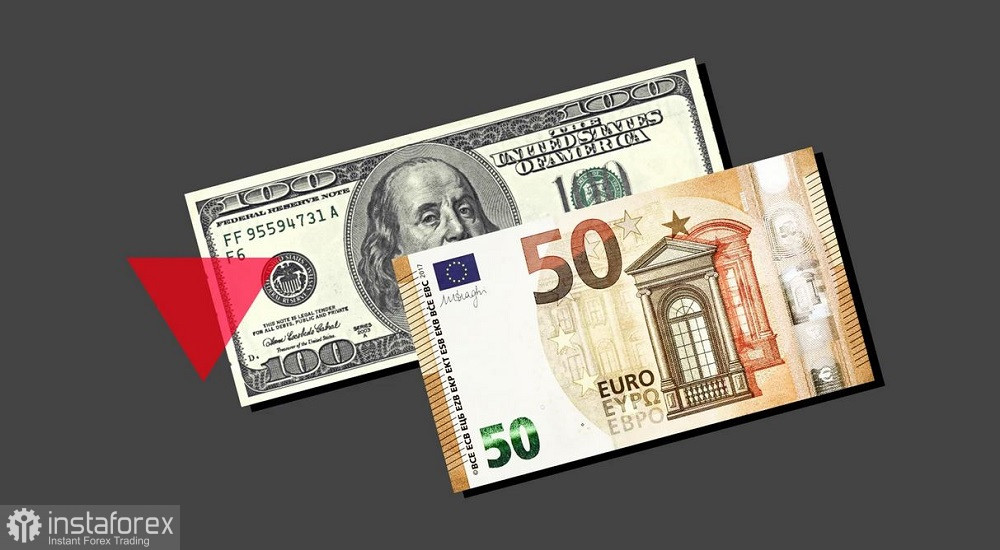On Wednesday, the euro-dollar pair once again attempted to consolidate within the 1.17 handle, but the upward momentum faded after buyers failed to break through the 1.1750 resistance level (upper Bollinger Bands line on the H4 chart). As a result, sellers regained control and pushed the pair back into the 1.16 range.

On the one hand, this could be described as a "false start," but in reality, it is far from the first attempt by EUR/USD buyers to develop an uptrend. Looking at the weekly chart: from mid-May to the end of June, the pair posted a consistent and almost uninterrupted rise, climbing from 1.1050 to 1.1830 (both the yearly and a four-year price high). However, the 1.1830 level (upper Bollinger Bands line on the daily chart) became the "ceiling" for the uptrend. Buyers could not overcome this price barrier, and the pair subsequently retreated to 1.1392. Several fundamental factors drove this decline. The euro reacted negatively to the "onerous" trade deal between the U.S. and the EU, while the dollar was supported by the July Conference Board Consumer Confidence Index (which rose to 97.2 vs. 95.9 expected) and the core PCE index, which accelerated to 2.8% y/y.
At the time, there was talk in the market about "early signs of a trend reversal" on the chart, but EUR/USD buyers managed to recover almost all of their losses over the next two weeks.
The July NonFarm Payrolls report and ISM indices completely reshaped the fundamental picture not only for EUR/USD, but for all major dollar pairs. Before the U.S. labor market report, the probability of a September Federal Reserve rate cut stood at 30–35%, but after the release, this probability jumped to 89%. As of today, traders are pricing in a 95% chance of a 25-basis-point cut at the September meeting (according to the CME FedWatch Tool). There is also a 5% probability that the Fed will cut rates by 50 basis points next month. While the odds are small, the fact that just a few weeks ago the market was almost certain the Fed would remain on hold this fall means that even a 5% probability puts pressure on the greenback.
Moreover, the market is assigning a 65% probability to an additional 25-basis-point cut as early as October. The likelihood that the Fed will limit itself to only a single 25-basis-point cut in September has fallen to 5%. In other words, traders are almost certain that a September rate cut will be followed by another one before the end of the year, at one of the two remaining meetings (October or December).
The CPI report added fuel to the fire: while it showed an acceleration in core inflation, it also indicated moderate growth in the headline consumer price index. The market interpreted this release as negative for the dollar, as it generally allows the Fed to proceed with a rate cut in September (or rather, to resume the easing cycle).
In addition, risk appetite increased after Donald Trump extended the tariff truce with China for another three months, until November. Without this decision, tariffs on Chinese imports would have returned to 145%, with reciprocal Chinese tariffs on U.S. goods going back to 125%. Three months ago, tariffs were temporarily reduced (to 30% and 10%, respectively) in anticipation of a "global deal" that could be reached between Washington and Beijing by the end of this year.
The bearish fundamental backdrop for the dollar is further reinforced by talk in the market about the hypothetical chance of a 50-basis-point cut in September. As noted earlier, the probability of this scenario is only 5%, but just weeks ago, it wasn't even being considered. And before the September meeting, there is still one more U.S. jobs report (for August) that could strengthen dovish expectations.
A few days ago, U.S. Treasury Secretary Scott Bessent called on the Fed to cut rates by at least 150 basis points this year—starting with a 50-basis-point reduction in September. It is worth noting that at the July meeting, two FOMC members (Board of Governors members Christopher Waller and Michelle Bowman) voted for a 25-basis-point cut, which suggests they may support a 50-basis-point move in September—especially after the disappointing July NonFarm Payrolls and the downward revisions to previous months. While cautious criticism of this scenario is currently coming from the Fed (for example, San Francisco Fed President Mary Daly said that a 50-basis-point cut next month "does not appear justified at this time"), if key U.S. macroeconomic reports in the coming weeks disappoint, the probability of such a move could rise significantly.
Thus, the current fundamental backdrop for EUR/USD does not favor a trend reversal—meaning the present price pullback is corrective in nature.
From a technical standpoint, on the H4 chart, the pair is between the middle and upper Bollinger Bands lines, above the Kumo cloud and the Kijun-sen line, but below the Tenkan-sen line. Therefore, it would be reasonable to consider long positions only after the pair moves back above the Tenkan-sen line (i.e., above 1.1690). In that case, the Ichimoku indicator would once again form a bullish "Parade of Lines" signal on H4, opening the way toward the next resistance level at 1.1750 (upper Bollinger Bands line on the same timeframe).





















